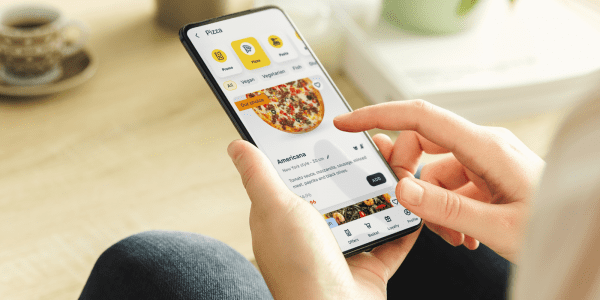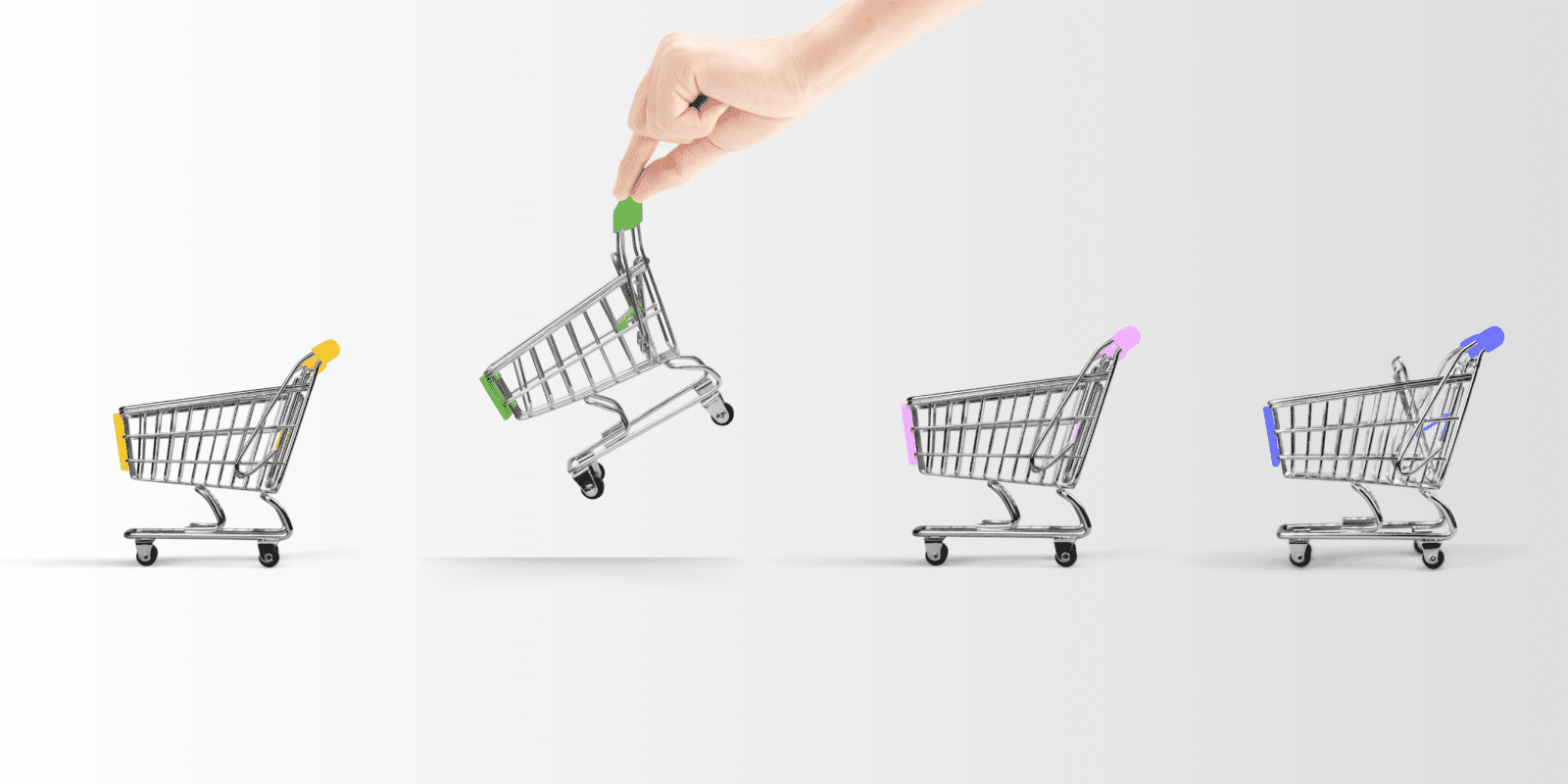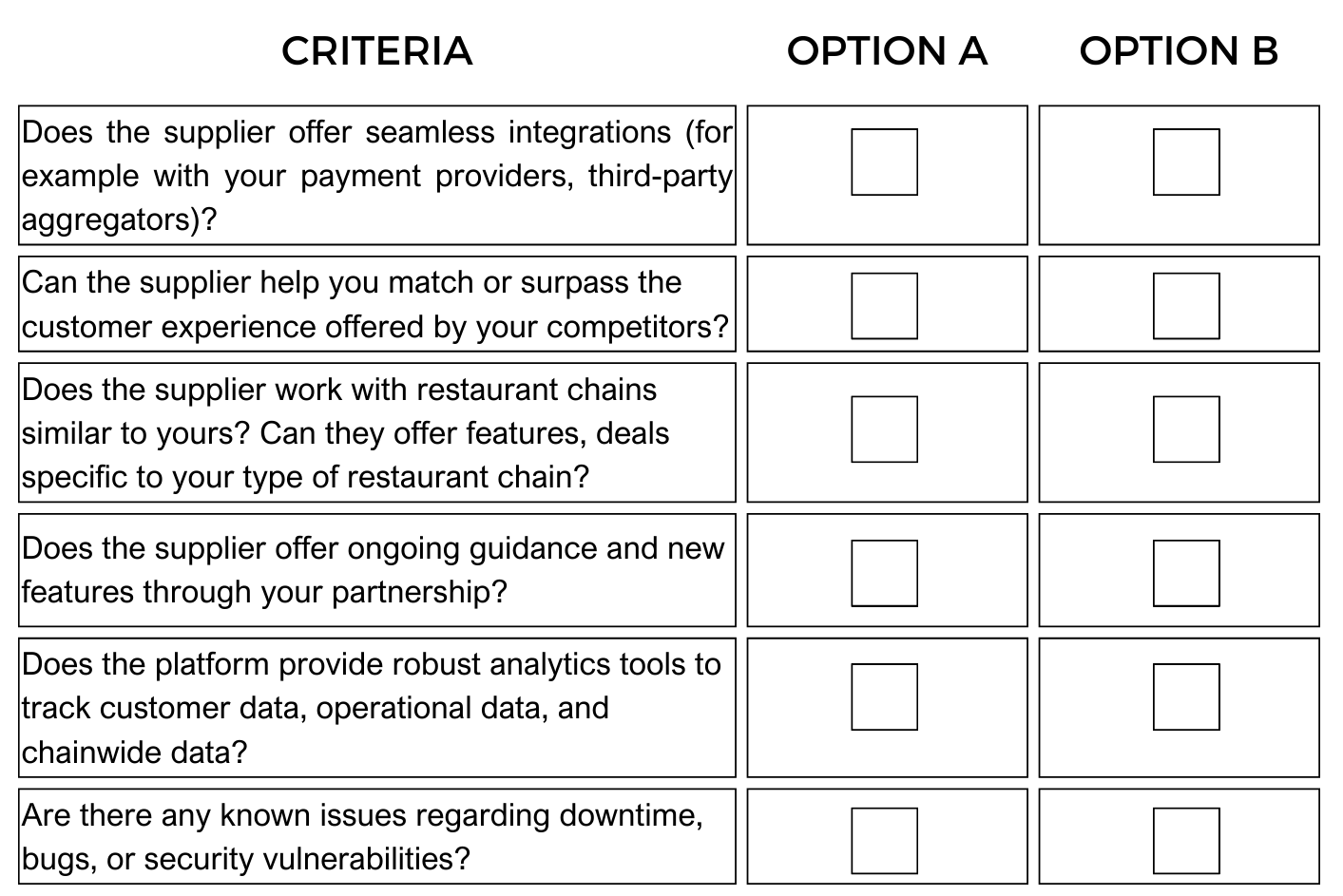


Choosing the right supplier can make or break a restaurant business. Suppliers are much more than just service providers. They are, in fact, essential partners in the financial success of the restaurant business.
Restaurant marketers and operators understand that streamlined operations and quality food are foundational to success. While these factors remain important, they have become standard expectations for today’s customers. However, what truly sets a restaurant apart and makes a significant impact is the customer experience.
Recent studies show that only 30% of restaurants feel that they are meeting their customers’ digital expectations (Hospitality Tech, 2024).
When choosing digital suppliers for your restaurant chain, begin by assessing their e-commerce solutions. In today’s market, where every restaurant chain is transitioning into an e-commerce venture driven by data, prioritizing e-commerce is key. It’s also where you can make a significant difference in revenue and profit.
Making the right choice can determine a restaurant business’s success or failure. From our conversations with numerous restaurant chains, we’ve observed where decision-making often fails or decision-makers become hesitant.
Unfortunately, it’s not uncommon for restaurant chains to find themselves repeatedly switching suppliers or changing them multiple times due to finding the solution no longer meets their evolving needs. This results in significant losses of money, time, and effort.
However, the cheapest option is often not the best for a restaurant chain’s long-term goals and finances.
For example, restaurants that commit to the cheaper options might see it as a win at first, but it often backfires. These restaurants end up missing out on important features, innovation, and integration capabilities. When they realize the importance of these integrations for meeting customer needs – they’re left scrambling to catch up. It’s a classic case of short-term gains leading to long-term headaches.
The Restaurant Tech Study (2024) shows that 26% of restaurant chains are not satisfied with how their providers are maintaining their digitals, while 40% have neutral opinions when asked about the innovations their partners provide.
While some providers impose additional costs for every new feature or innovation, others fail to provide such updates altogether. Hence, it is imperative to factor in the future-proofing of a platform when making a decision.
Do they align with your business’s customer profile? Do they effectively address similar pain points and fulfill customer needs? One valuable approach is to evaluate the online ordering experience of one of their clients. Take note of when the app or website was last updated and assess customer ratings. This firsthand insight can provide valuable information for making informed decisions about suppliers.
It’s also vital to assess how closely your business matches what the customers of your potential suppliers specialize in. Working with someone who serves a similar clientele means they’re likely experts in your industry. After all, every restaurant chain is unique, spanning from fast-casual to fine dining services, each with its own set of needs. Opting for a supplier who understands these nuances can ensure a more tailored and effective solution for your business.
Therefore, think about the level of competition you’re targeting. If your restaurant chain has more than 40 stores, look at suppliers that work with bigger businesses, not ones serving smaller ones with 15 or fewer stores. This way, your evaluation matches the size and challenges that matter most to your goals.
International restaurant chains, together with the food delivery platforms are shaping the way customers want to order their food. Examine the order experience of these platforms and compare it to the experience the supplier’s current customers are offering. You will notice if the supplier’s promises are in line with their offerings.
For instance, consider Uber’s recent introduction of the lock screen notification feature. This enables customers to track their orders in real-time even when the customers’ phone is locked. The right digital partner is on top of such innovations and swiftly integrates similar or even better features onto your own app. By doing so, you eliminate any reason for customers to favor Uber Eats, or any other platform or brand over your brand.
Many providers simply give you a platform and leave it up to you to figure it all out. The optimal decision lies in selecting a supplier who offers ongoing guidance and support at every step of your digital journey. Such a partner shares benchmarks gathered from their client base assists in setting up digital marketing strategies, constantly conducts A/B testings, and optimizes your website and app for maximum conversion rates based on your own customer data.
Even in today’s tech-driven restaurant market, there are solutions that lack thorough infrastructure and reliability testing. Unfortunately, this can lead to unexpected downtime for your restaurant website and other issues such as bugs or security vulnerabilities compromising your and your customers information. Thus, it’s essential to prioritize reliability and security when choosing tech solutions for your restaurant business.
This downtime can significantly impact your restaurant business in two critical ways. Firstly, customers may be unable to place orders through your website and app. Secondly, you may face difficulties processing orders received through your in-store solutions. Even minutes of downtime during peak hours can translate to significant financial losses.
Make sure to check for qualifications, expertise, and reliability in potential tech partners to mitigate these risks.
We understand that most restaurant marketers and operators are passionate about food, not technology.
They may feel overwhelmed when it comes to choosing the best software for their business. That’s why we hope that filling out this checklist and carefully weighing what aligns best with your upcoming business goals, can help you make an informed decision.

If you seek more in-depth advice or are interested in exploring our product and services further:
Book a meeting

